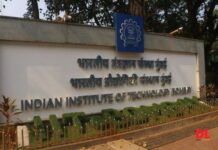According to the experts, the pattern of AIEEE is becoming similar to that of IIT-JEE. The exam was held across 1,460 centres in the country with nearly one million students appeared for the exam, it took everybody by surprise with a complete change in the examination pattern. 'It was comparatively a difficult paper and the paper pattern was on the lines of the IIT entrance exams. This year the total marks were 432 instead of 315 total marks of last year. Thus, the difficulty also increased,' said Kedar Takalkar, who conducts coaching classes for AIEEE. The marks allocation was also quite different from previous year's exams. This year, a total of 30 questions in each subject physics, chemistry and mathematics were asked. Out of these, 24 questions were of four marks each and six questions of eight marks each. One-fourth negative marking was also one of the elements in the paper. As per Pitam Singh, head of special examination, Central Board of Secondary education (CBSE), 'This year we decided to reduce the total number of questions and fix it to 90. Out of these questions, 80 % of questions needed only normal skills to solve them. The rest of the 20 % were of conceptual type that would actually test the caliber and talent of the candidate. This will be helpful while selecting the candidates.'
A good score in AIEEE can get a candidate admission into B.E, B.Tech, B. Arch and 20 National Institute of Technology, besides Deemed Universities and nine Central and State Government-funded institutions. In the city alone, around 40 engineering colleges accept AIEEE score for admissions, while most of the engineering colleges in the state fill up 15 % of their total intake capacity through the AIEEE scores. Akash Chaudhry, who runs a coaching institute for AIEEE in the city, said, 'The questions asked in the mathematics section was lengthy as well as conceptual. The level of questions can be compared with the questions asked in mathematics section of IIT-JEE. This, in a way, is an indication that the paper or level of AIEEE is moving towards higher level of complexity, since the amount of time remains same but the numbers of questions asked have reduced.' It is also estimated that the cut-offs will be marginally lower this year. 'If the cut-off was 160 to get into one of the engineering colleges in the state, this time around, the cut-off could be around 130 as a result of the changed pattern in the question paper,' observed Takalkar.



















